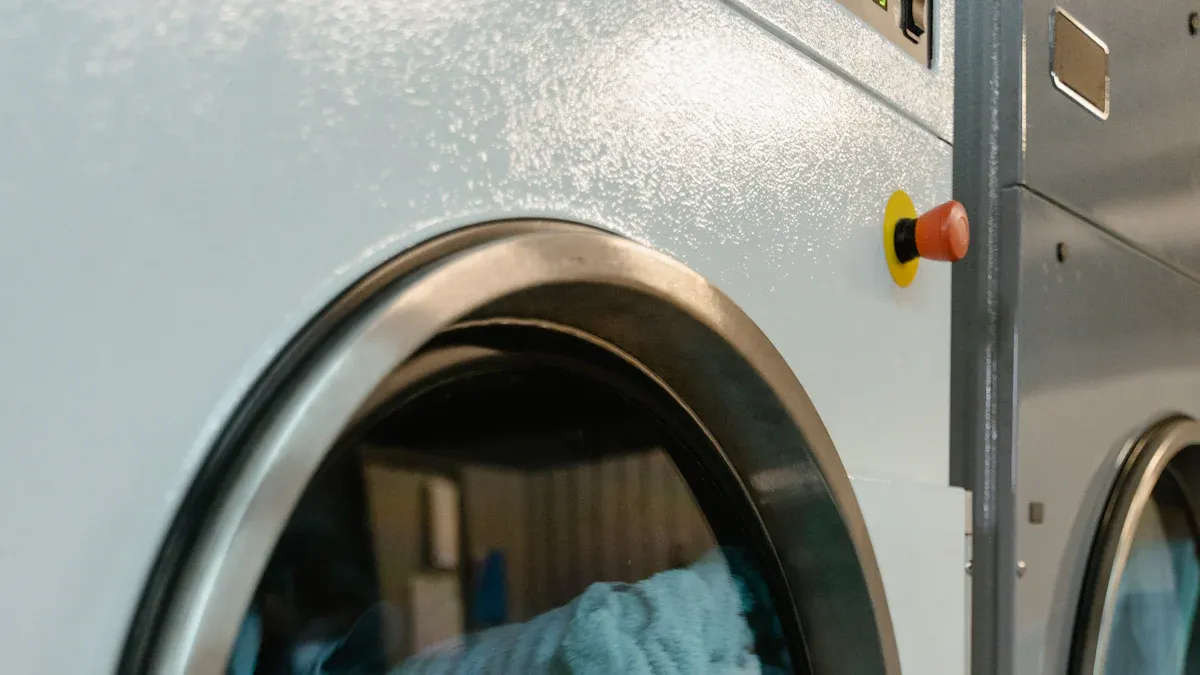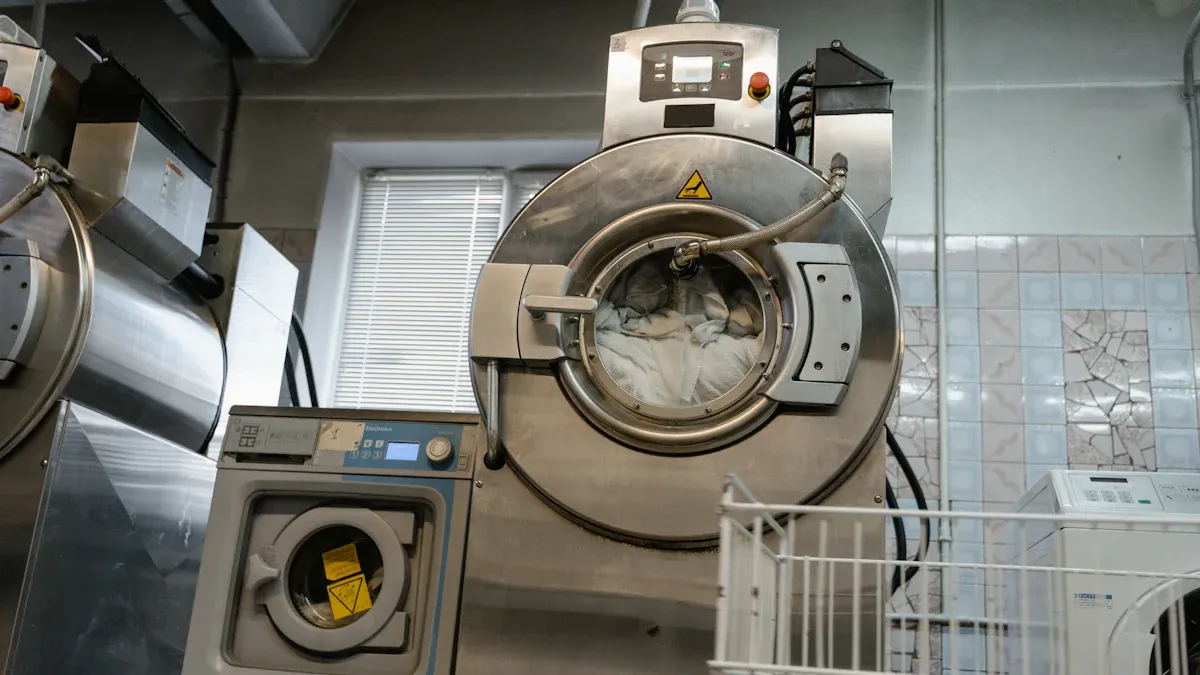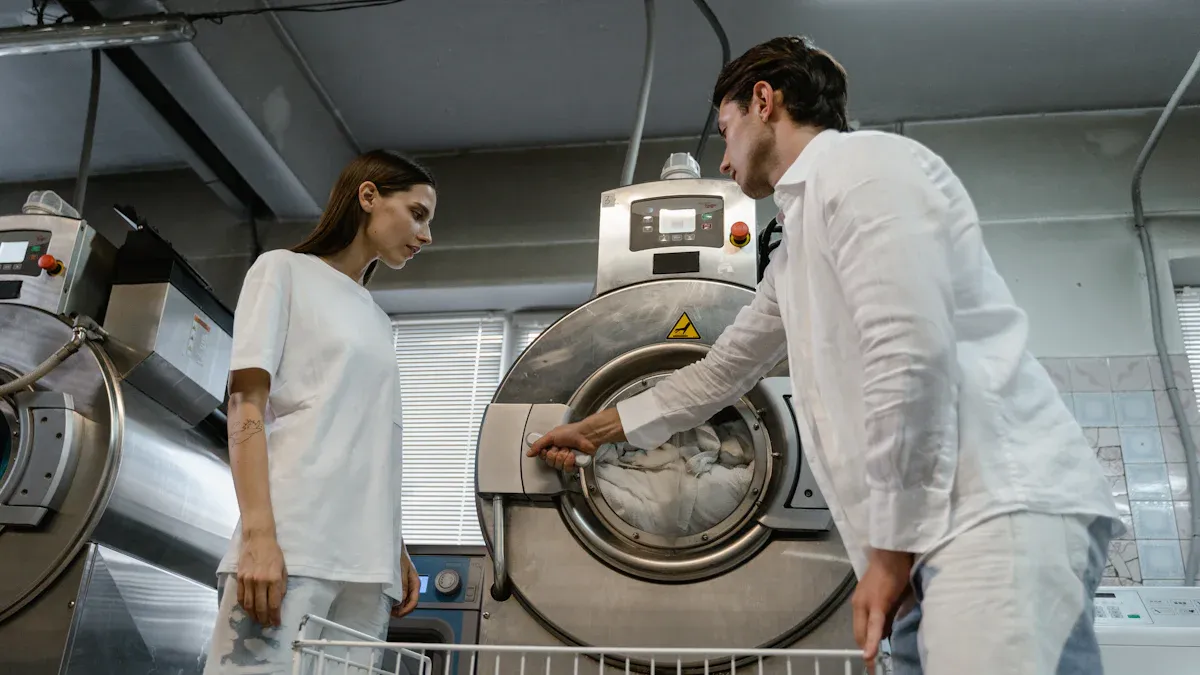Easy Maintenance Guide for Customized Adsorption Dryers

Image Source: red beet root powder
Maintaining the Adsorption Dryer Easy to Maintain Customized is crucial for optimal performance. Regular care ensures it operates smoothly and has a longer lifespan. Choosing the Adsorption Dryer Easy to Maintain Customized tailored to your specific needs simplifies the drying process, enhancing its efficiency and effectiveness every time. Additionally, this reliable dryer allows you to work without unexpected issues.
Key Takeaways
-
Taking care of your dryer helps it work well longer. Clean the filters and check for clogs every few weeks.
-
Custom dryers can fit your drying needs better. Pick features that suit your work to save time and reduce waste.
-
Check and change desiccants often to keep removing moisture. Watch for wear and replace them on time to prevent stops.
Understanding Adsorption Air Dryers

Image Source: pexels
What Are Adsorption Air Dryers
Adsorption air dryers are machines that remove water from air. They use a special material called desiccant to trap water vapor. This keeps the air dry and clean, which is important for industries like healthcare, factories, and food production. Dry air helps stop damage to equipment and improves how things work.
Why is dry air so important? Moisture in air can cause rust, dirt, and even system breakdowns. Adsorption air dryers fix this by giving air with a low dew point, meaning no harmful moisture is left.
Types of Adsorption Air Dryers
There are two main kinds of adsorption air dryers: heated and heatless. Heated dryers use heat from outside to refresh the desiccant, while heatless dryers use some of the dried air for this. Both work well, but your choice depends on what you need.
For instance, if you need very dry air with a dew point of -70°C, a heatless dryer is better. Heated dryers save more energy and handle bigger airflows. You can pick the type that matches your needs best.
How Adsorption Air Dryers Work
Adsorption air dryers work in a simple way. Compressed air goes into the dryer and passes through a chamber with desiccant. The desiccant catches the water, leaving the air dry. When the desiccant is full of water, it needs to be refreshed. This is done by heating it or using some dry air to remove the water.
These dryers are made to work well with features like advanced desiccant and good airflow. They remove moisture effectively, making them a great choice for industries needing clean, dry air.
Tip: Take care of your dryer by replacing the desiccant and checking airflow. This helps it last longer and work better.
Benefits of Customizable Solutions
Why Customization Matters
Every job is different, and so are drying needs. Customization helps match the dryer to your needs. Whether you need a certain airflow or dew point, it fits perfectly. This improves efficiency and makes equipment last longer. For example, special desiccants like silica gel handle moisture better. This boosts performance and cuts down on waste. Picking a dryer made for your needs prevents damage. It also saves time and money over time.
Benefits of Custom Adsorption Dryers
Custom dryers have many advantages. They last longer, so you replace them less often. Some desiccants can be reused, which helps the environment. These dryers also work well in tough conditions. For example, in biogas or oil industries, they can have explosion-proof parts. They can also resist corrosion. This makes them a good choice for special uses.
Examples of Custom Features
Custom dryers come with features for different needs. Here’s how industries benefit:
| Industry | Custom Features | Benefits of Customization |
|---|---|---|
| Biogas | Special desiccants, explosion-proof parts | Safe use in risky environments |
| Oil and Gas | Designs for corrosive gases | Better performance in tough conditions |
These features make dryers work well in any setting. By customizing, you get better results and more reliable performance.
Low Maintenance Tips for Adsorption Dryers

Image Source: pexels
Regular Cleaning and Inspection
Keep your adsorption dryer clean to help it work well. Dust and dirt can block airflow and lower performance. Check your dryer every few weeks for leaks, wear, or blockages. Clean the filters and chambers often to stop dirt buildup. This keeps the system running smoothly.
Tip: Inspect your dryer every 2-4 weeks. Early checks prevent expensive repairs later.
Monitoring and Replacing Desiccants
Desiccants are key for removing moisture. Over time, they get full and stop working well. Watch them closely to keep air clean. Look for discoloration, clumps, or cracks in the desiccant. If using color-changing desiccants, replace them when 80% change color. High moisture levels above 5ppm H2O also mean it’s time to replace them.
Plan a schedule to replace desiccants based on how often you use the dryer. This avoids downtime and keeps moisture removal effective.
Ensuring Proper Airflow and Temperature
Good airflow and temperature are important for your dryer to work well. Poor airflow or wrong temperatures make it harder to remove moisture. Follow these simple guidelines:
| Metric | Description |
|---|---|
| Airflow | At least 1/2 cfm/lb of material. Account for backpressure. |
| Dewpoint | Low dewpoints (-20, -40, -60 F) improve drying and moisture removal. |
Keeping these levels steady helps your dryer perform its best and deliver clean air.
Preventing Contamination and Wear
Dirt and moisture can damage your dryer and shorten its life. Use fine filters to block particles and water-absorbing filters to stop moisture. Vent dryers also help keep moisture out. For extra protection, add external purification systems. These steps reduce wear and save energy by lowering strain on parts.
A clean and cared-for dryer removes moisture better and lasts longer. Follow these tips to save money and enjoy reliable performance.
Common Maintenance Challenges and Solutions
Fixing Pressure Drop Problems
Pressure drops can make dryers work less efficiently. You may notice weaker airflow or poor performance. This often happens because of clogged filters, blocked pipes, or the wrong dryer size. To solve this, check filters and pipes often. Clean or replace them when needed. Also, make sure the dryer fits your system's airflow needs. A correctly sized dryer avoids overloading and keeps pressure steady.
Tip: Look at the pressure gauge every week. Catching problems early can save money on repairs.
Solving Regeneration Issues
Regeneration keeps the desiccant working well. If it doesn’t regenerate, it won’t remove moisture properly. This can happen if the inlet temperature is too high or cycles are too short. To fix this, monitor the inlet temperature and keep it in the right range. Plan regular regeneration cycles to clear out moisture. Using good-quality desiccants helps because they last longer and handle more cycles.
Fixing System Problems
System failures can stop your dryer from working, but they’re often easy to fix. Here’s a table of common problems and solutions:
| Problem | Effect on Dryer | How to Fix |
|---|---|---|
| Clogged or broken drain(s) | Lets moisture into the system | Clean drains regularly |
| High inlet or room temperatures | Reduces dryer performance | Keep temperatures in the recommended range |
| Wrong dryer size | Overloads the dryer | Use a dryer that matches your system |
| Poor piping design | Blocks airflow | Redesign pipes for better airflow |
| Worn-out parts | Lowers performance | Check and maintain parts often |
| Old or broken dryer | Stops working completely | Replace with a new dryer |
Fixing these problems quickly keeps your dryer running well.
Making Parts Last Longer
Caring for your dryer’s parts saves money and prevents downtime. Start by picking high-quality desiccants. They absorb more moisture and last through more cycles. Regular regeneration also keeps them effective. Running the dryer at the right temperature and humidity reduces wear on parts. New desiccant technology absorbs moisture better and lasts longer, making it a smart choice.
Note: Spending more on better desiccants now can save you money later.
Taking care of your adsorption dryer is simple and important. Regular upkeep helps it work well and last longer. Custom options make it fit your needs perfectly. Follow these easy steps to save time, money, and energy while getting great results.
FAQ
How often should you change the desiccant in an adsorption dryer?
Change the desiccant every 6-12 months. This depends on how much you use it and the moisture levels. Checking it often keeps the dryer working well.
Can adsorption dryers work in very hot or cold places?
Yes, they can handle extreme heat or cold. Their smart design helps them dry air even in tough conditions.
Why are customizable adsorption dryers better?
Custom dryers fit your needs perfectly. They work better and last longer. You can adjust them for airflow, dew point, or special desiccants.